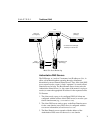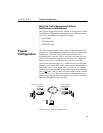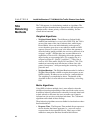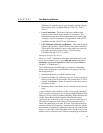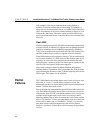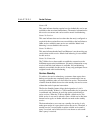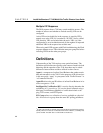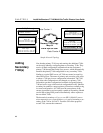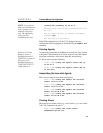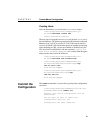
C H A P T E R 2Intel® NetStructure™ 7190 Multi-Site Traffic Director User Guide
14
Multiple VIP Response
The DNS response from a 7190 may contain multiple answers. The
number of answers and whether to include stand-by VIPs can be
configured.
Active VIPs are included first in the response. A stand-by VIP is
treated as an active VIP, if it is marked as “IN USE” due to a failed
VIP. Stand-by VIPs are included after the active VIPs: (a) if the
configuration is set to include them and, (b) the number of requested
additional VIPs in the response has not been met.
1
When using mutli-VIP response with Flash load balancing, the Flash
response attempts to use VIPs within the same peer group first before
including VIPs from the other peer groups.
Definitions
Understanding of the 7190 requires some specialized terms. The
definitions provided here are specific to the context of multi-site load
balancing and the operation of the 7190, thus there may be subtle
differences between these and those offered in other sources.
Agent is a component of an Intel Load Balancer that gathers metric
data and transmits it to the 7190. For the purposes of the discussions
in this user guide, “agent” is synonymous with “Traffic Director” or
“e-Commerce Director.”
Agent IP refers to the real IP address of an Intel Load Balancer in its
role as an agent to a 7190.
Intelligent Site Verification (ISV) is used to directly determine the
availability of (1) a service or, (2) a service that is balanced using a
third-party Load Balancer. Methods of verification include a site
ping, TCP connect, and HTTP probe.
ISV Group refers to a collection of services available at a physical
site. All services in a group share the same ISV polling parameters.
1.
If multi-VIP standby is enabled when using the Flash load balancing method,
standby VIPs from a site are not included if all of the VIPS are (1) standby and,
(2) not marked “IN USE” due to a failed VIP at another site.




